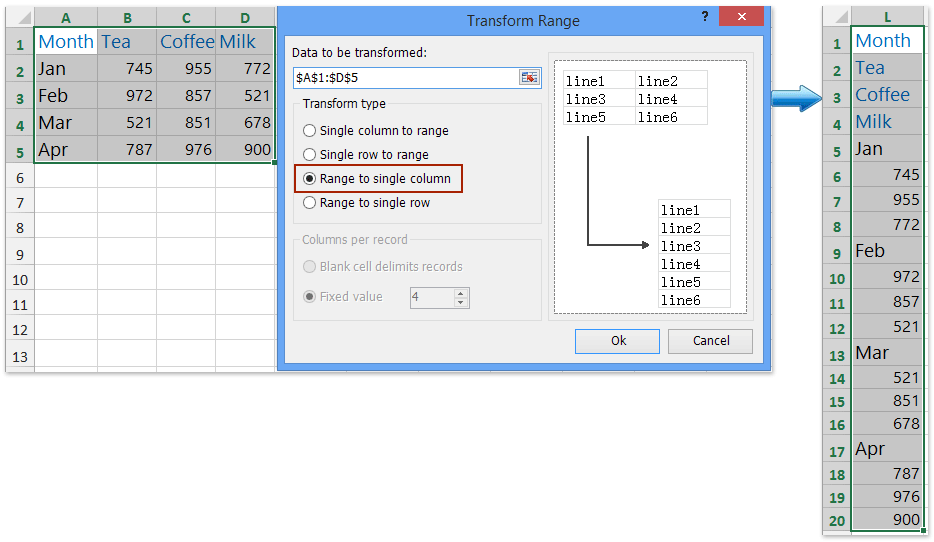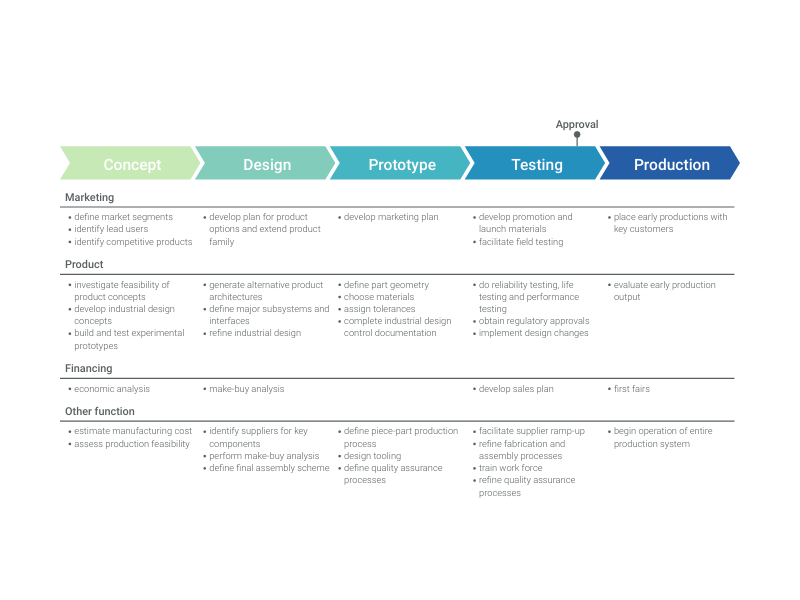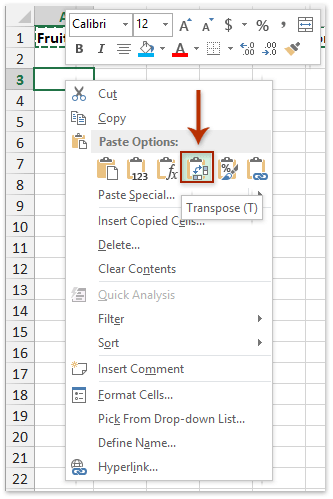
If your data is in an Excel table, the Transpose feature won’t be available. Verify these formulas use absolute references-if they don’t, you can switch between relative and absolute references before you rotate the data. If your data includes formulas, Excel automatically updates them to match the new placement. The data you copied will overwrite any data that’s already there.Īfter rotating the data successfully, you can delete the original data. Pick a spot in the worksheet that has enough room to paste your data. Select the first cell where you want to paste the data, and on the Home tab, click the arrow next to Paste, and then click Transpose. Using the Cut command or CONTROL+X won’t work.

Word adjusts the columns widths, as necessary, to fit the data within the margins of the page. (The table handle is at the top-left corner of the table it looks like a small box containing a four-headed arrow.)

(In Word 2007 click the Office button and then click Word Options. You can then select this pasted data and covert it to a Word table that extends from margin to margin.Ī third option is to try modifying a deeply buried setting in Word. This results in each row of your Excel data as an individual paragraph with tabs between each column in each row.

To keep the data as an Excel table object, click either Keep Source Formatting or Link & Keep Source Formatting.From the resulting options you should notice six options in the Paste Options area: Then, display the Home tab of the ribbon and, in the Clipboard group, click the down arrow under the Paste tool. When you copy the table in Excel and switch to Word, click where you want the data inserted. You can also, within Word, choose from different available pasting options for the table. Since the table is bounded by the outer single-cell table, it won't extend beyond the margins of the page. You can then paste the Excel data into that single cell, which results in Word creating a table within a table.
#Excel for mac copy horizontally and paste vertically full
One option is to, in Word and before pasting, create a single-cell table that is the full width of the margins on the page. There are a few ways you can approach this, with most of the solutions occurring on the Word side of the process. Jerald wonders if there is something he can do, in Excel, to ensure that the data will stay within the page margins in Word. Every time he pastes the data, the "table" in Word extends beyond the right margin. He creates his financial models in Excel and then pastes the Excel data into a Word document before printing. Jerald uses Excel quite a bit in conjunction with Word.


 0 kommentar(er)
0 kommentar(er)
